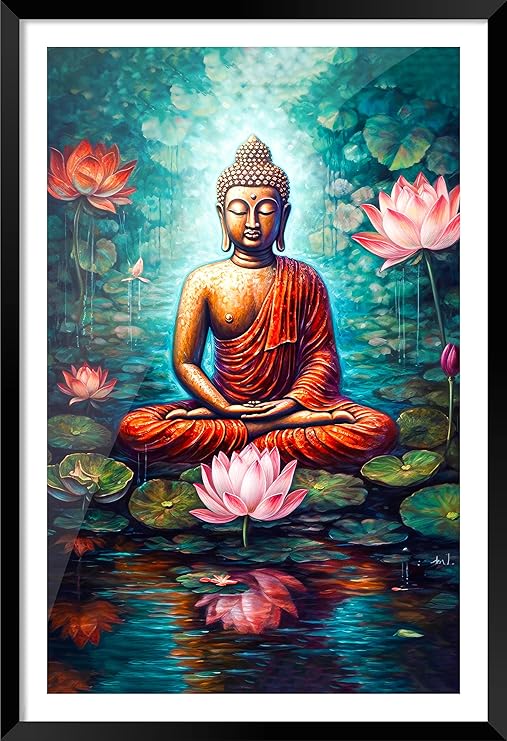Buddha Painting: A Symbol of Peace and Enlightenment
Buddha paintings are a revered art form that symbolizes serenity, mindfulness, and spiritual awakening. Rooted in Buddhist philosophy and culture, these artworks often depict Lord Buddha in various poses (mudras) and settings, representing his teachings and the path to enlightenment.

Key Themes and Symbolism
- Meditative Posture (Dhyana Mudra): Depicts Buddha in deep meditation, symbolizing inner peace and self-realization.
- Teaching Gesture (Dharmachakra Mudra): Illustrates Buddha sharing the principles of Dharma, representing wisdom and enlightenment.
- Blessing Pose (Varada Mudra): Reflects compassion, generosity, and divine blessings.
- Birth, Enlightenment, and Nirvana: Many paintings narrate significant moments from Buddha’s life, such as his birth in Lumbini, enlightenment under the Bodhi tree, and attainment of Nirvana.
Artistic Styles and Techniques
- Traditional Thangka Paintings: Intricate Tibetan-style scrolls depict Buddha amidst mandalas and celestial realms, often used for meditation and rituals.
- Realistic Portraits: Highlight fine details of Buddha’s serene expression, focusing on lifelike representation.
- Abstract and Modern Art: Uses symbolic elements such as lotus flowers, Bodhi trees, and minimalist depictions to convey Buddha’s essence.
- Golden Buddha Paintings: Incorporates gold leaf and vibrant colors, symbolizing divine radiance and purity.
Symbolic Elements in Buddha Paintings
- Lotus Flower: Represents purity and spiritual awakening.
- Bodhi Tree: A symbol of enlightenment, reflecting Buddha’s journey.
- Third Eye: Denotes spiritual insight and higher consciousness.
- Aura or Halo: Highlights Buddha’s divine energy and spiritual radiance.
Materials and Mediums
Buddha paintings are created using diverse materials, including:
- Acrylic and Oil Paints: For vibrant, textured artwork.
- Watercolors: To evoke a soft and tranquil mood.
- Canvas or Silk: Common in both modern and traditional styles, especially Thangka art.
Cultural and Spiritual Importance
Buddha paintings hold deep significance in Buddhist communities and beyond. They serve as a source of inspiration, a focal point for meditation, and a symbol of peace and compassion. In homes and spiritual spaces, these paintings create a calming and sacred atmosphere.
Modern Popularity
Today, Buddha paintings are widely appreciated for their artistic and spiritual value. They are featured in galleries, meditation centers, and modern interiors, resonating with people seeking tranquility and mindfulness.
Conclusion
A Buddha painting is more than an artistic creation; it is a reflection of profound spiritual wisdom and the pursuit of inner harmony. Whether traditional or contemporary, these paintings continue to inspire people worldwide with their timeless message of peace and enlightenment.
